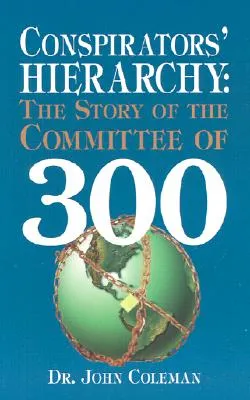The Committee of 300 is a controversial conspiracy theory that suggests that a secretive group of elites governs the world behind the scenes. Despite a lack of concrete evidence and widespread skepticism from experts, the theory continues to captivate the public imagination, with numerous books, websites, and social media posts devoted to the subject. In this article, we will examine the origins and evolution of the Committee of 300 conspiracy theory and consider the available evidence both for and against its validity.
The origins of the Committee of 300 conspiracy theory can be traced back to the late 20th century and the works of John Coleman, a British author and conspiracy theorist. In his book “Conspirators’ Hierarchy: The Committee of 300,” Coleman claimed that the group was a secretive organization comprised of the world’s wealthiest and most powerful individuals, including royal families, politicians, and business leaders. According to Coleman, the Committee of 300 operates in secret, pulling the strings of governments and manipulating world events to serve their own interests.
Since its inception, the Committee of 300 conspiracy theory has taken on a life of its own, with numerous iterations and interpretations. Some proponents of the theory have claimed that the group is behind everything from wars and economic crises to natural disasters and pandemics, while others have suggested that the Committee of 300 is part of a larger, even more sinister global conspiracy.
Despite the widespread popularity of the Committee of 300 conspiracy theory, there is little concrete evidence to support its validity. Critics of the theory argue that it is based on anecdotal evidence and unverifiable claims, and that it lacks a credible basis in fact. Moreover, many experts point out that the theory relies on a number of logical fallacies, including the appeal to ignorance and the assumption that the absence of evidence is evidence of absence.
Despite these criticisms, the Committee of 300 conspiracy theory continues to captivate the public imagination, and has even been embraced by some in the alternative media. However, it is important to approach the theory with a critical eye, and to consider the available evidence before drawing any conclusions.
In conclusion, the Committee of 300 conspiracy theory is a controversial and polarizing topic that has been the subject of intense debate for decades. While it may be tempting to embrace the idea of a secretive group of elites manipulating world events, it is crucial to approach such theories with a critical eye and to consider the available evidence before jumping to conclusions. Ultimately, the truth behind the Committee of 300 may never be fully uncovered, and its legacy may remain shrouded in mystery. Nevertheless, the continued popularity of the theory serves as a reminder of the enduring power of conspiracy theories, and the need for critical thinking in a world increasingly plagued by misinformation and false narratives.












